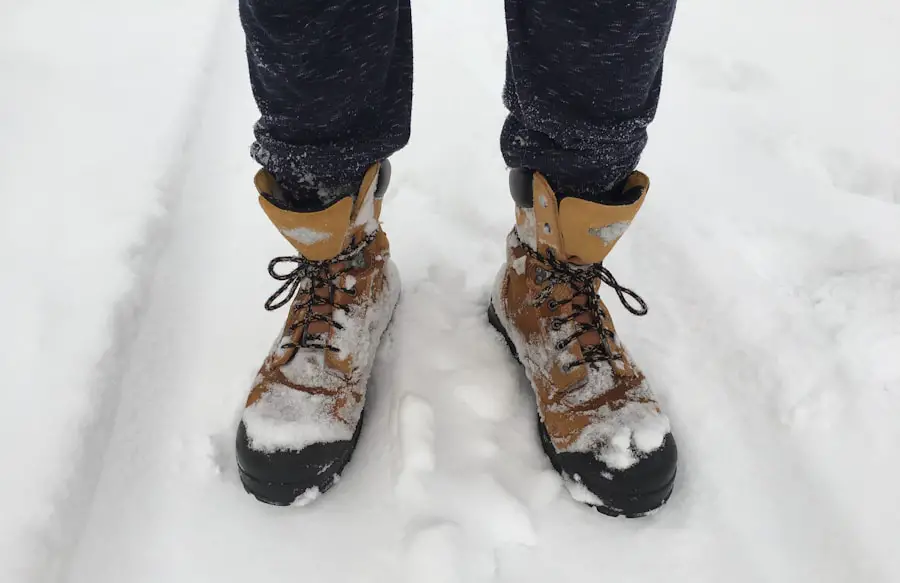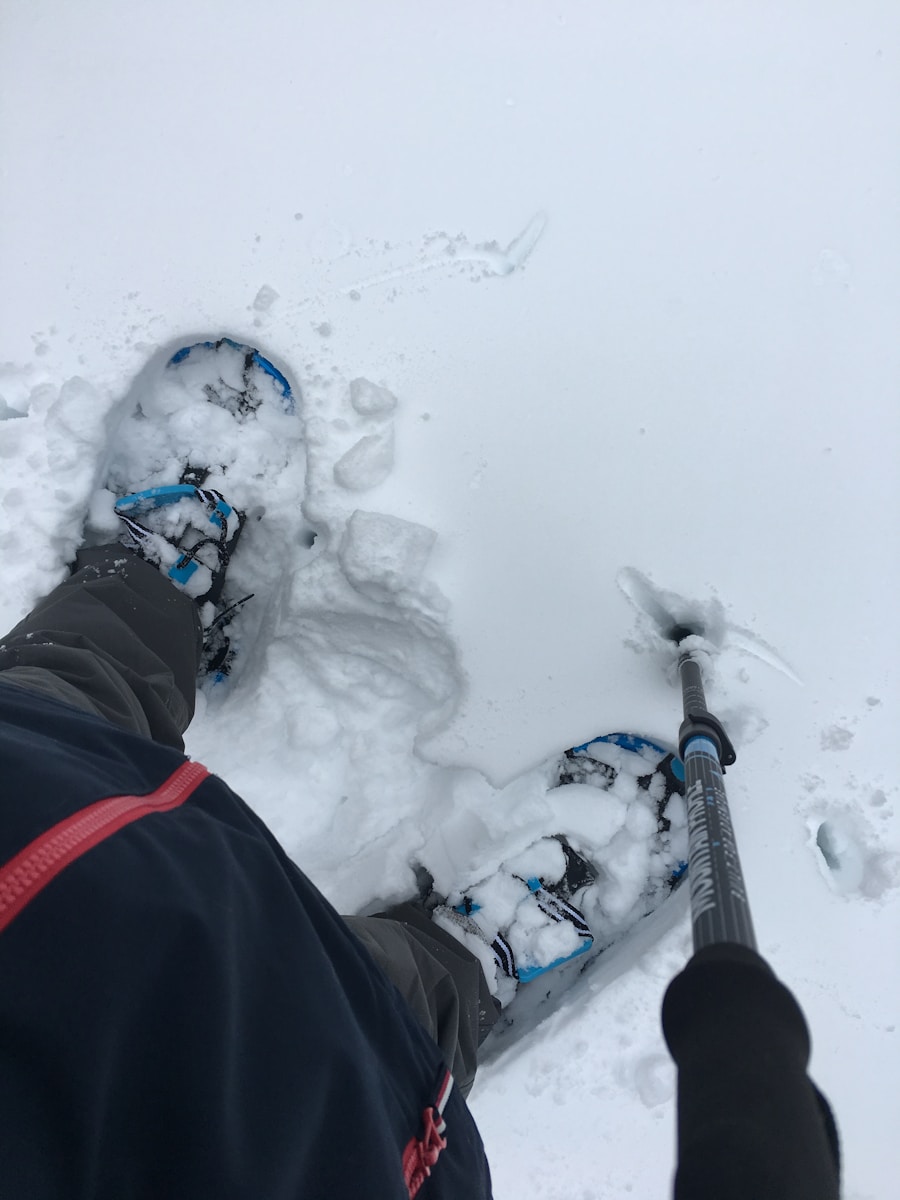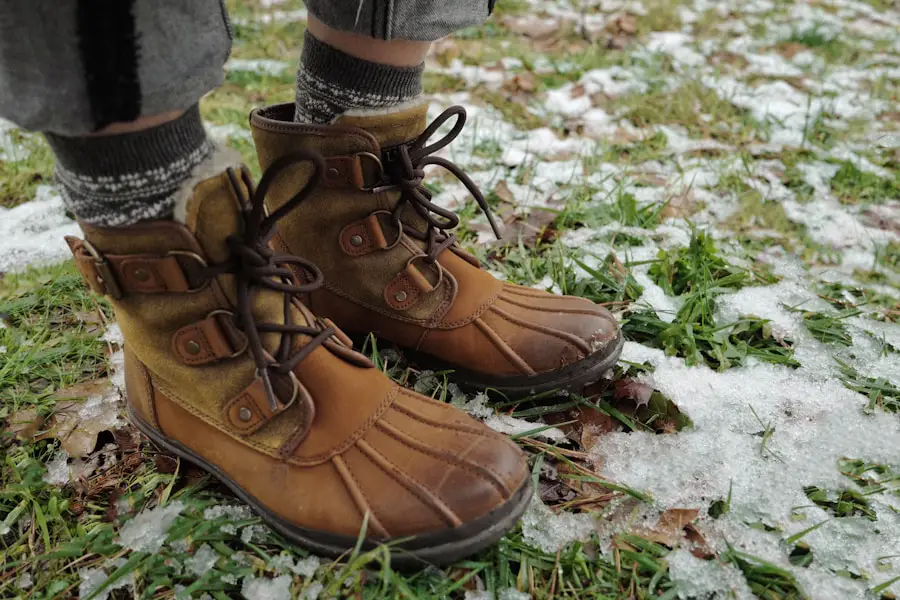Snow boots have long been associated with winter activities, primarily designed to keep feet warm and dry in snowy conditions. However, their versatility extends beyond mere aesthetics or casual wear; they can be an excellent choice for hiking in winter landscapes. The rugged terrain, icy trails, and deep snow often encountered during winter hikes require footwear that can withstand the elements while providing comfort and support.
Snow boots, with their specialized features, can offer a unique blend of insulation, waterproofing, and traction that makes them suitable for various hiking conditions. As outdoor enthusiasts increasingly seek to explore nature year-round, understanding the capabilities of snow boots becomes essential. While traditional hiking boots are designed for warmer months and varied terrains, snow boots cater specifically to cold weather challenges.
This article delves into the features that make snow boots suitable for hiking, their limitations, practical tips for use, and how to choose the right pair for your winter adventures. By examining these aspects, hikers can make informed decisions that enhance their outdoor experiences during the colder months.
Key Takeaways
- Snow boots are versatile and can be used for hiking in snowy and cold conditions
- Features like insulation, waterproofing, and traction make snow boots suitable for hiking
- Limitations of snow boots include weight, lack of breathability, and limited ankle support
- Tips for using snow boots for hiking include proper sizing, layering socks, and breaking them in
- Choosing the right snow boots for hiking involves considering factors like insulation, traction, and ankle support
The features of snow boots that make them suitable for hiking
Snow boots are engineered with several key features that enhance their performance in winter hiking scenarios. One of the most critical attributes is insulation. Many snow boots incorporate materials such as Thinsulate or fleece linings that trap heat while allowing moisture to escape.
This insulation is vital for maintaining warmth during prolonged exposure to cold temperatures, especially when hiking in snowy environments where the risk of frostbite is heightened. The thickness and quality of insulation can vary significantly between models, so it’s essential to choose a pair that matches the expected temperature range of your hiking destination. Another significant feature is waterproofing.
Snow boots typically utilize waterproof membranes like Gore-Tex or proprietary materials that prevent water from seeping in while allowing sweat to escape. This is particularly important when traversing slushy trails or deep snow, where wet feet can lead to discomfort and even hypothermia. The combination of waterproofing and insulation ensures that hikers can maintain dry and warm feet throughout their journey.
Additionally, many snow boots come with a higher shaft design that provides extra protection against snow ingress, further enhancing their suitability for winter hiking. Traction is another critical aspect of snow boots that makes them ideal for hiking in winter conditions. The outsoles of these boots are often designed with deep lugs and specialized rubber compounds that provide superior grip on slippery surfaces.
This is essential when navigating icy trails or packed snow, where slipping can lead to falls and injuries. Some models even feature built-in traction devices or compatibility with crampons for more technical terrain, allowing hikers to tackle a broader range of winter landscapes safely.
Limitations of snow boots for hiking

Despite their many advantages, snow boots do have limitations when it comes to hiking. One notable drawback is their weight and bulkiness compared to traditional hiking boots. Snow boots are often heavier due to the additional insulation and waterproofing materials used in their construction.
This added weight can lead to fatigue over long distances, making them less suitable for extended hikes where every ounce counts. Hikers who prioritize speed and agility may find that snow boots hinder their performance on longer treks. Another limitation is breathability.
While many snow boots are designed to wick moisture away from the foot, they may not offer the same level of breathability as lightweight hiking shoes or boots. This can lead to overheating during more strenuous activities or warmer days, resulting in sweaty feet and discomfort. Hikers should be mindful of this aspect when planning their trips, especially if they anticipate varying weather conditions or intense physical exertion.
Additionally, snow boots may not provide the same level of ankle support as traditional hiking boots. While many models do feature a higher cut for added protection against snow and debris, they may lack the rigid support structures found in dedicated hiking footwear. This can be a concern on uneven terrain where ankle stability is crucial for preventing injuries.
Hikers should assess their specific needs based on the type of trails they plan to explore and consider whether the support offered by snow boots meets those requirements.
Tips for using snow boots for hiking
| Tips for using snow boots for hiking |
|---|
| 1. Choose the right size to ensure a comfortable fit |
| 2. Look for boots with good insulation to keep your feet warm |
| 3. Opt for waterproof boots to keep your feet dry |
| 4. Consider boots with good traction for slippery and icy terrain |
| 5. Break in your boots before a long hike to prevent blisters |
| 6. Use gaiters to keep snow out of your boots |
When venturing out on winter hikes with snow boots, there are several practical tips to ensure a comfortable and safe experience. First and foremost, it’s essential to break in your snow boots before embarking on a long hike. Just like any other footwear, new snow boots can cause blisters if worn for extended periods without prior acclimatization.
Spend some time walking around your home or on shorter hikes to allow your feet to adjust to the fit and feel of the boots. Layering your socks is another effective strategy for enhancing comfort during winter hikes. Opt for moisture-wicking base layers combined with thicker insulating socks to create a barrier against cold temperatures while managing moisture effectively.
Avoid cotton socks, as they retain moisture and can lead to cold feet. Instead, consider materials like merino wool or synthetic blends that provide warmth without sacrificing breathability. Additionally, pay attention to your gait and foot placement while hiking in snowy conditions.
Snow can obscure uneven terrain, making it easy to trip or twist an ankle if you’re not careful. Take shorter strides and maintain a steady pace to help maintain balance on slippery surfaces. If you encounter particularly icy sections, consider using trekking poles for added stability and support.
Choosing the right snow boots for hiking
Selecting the right pair of snow boots for hiking involves considering several factors tailored to your specific needs and preferences. Start by assessing the climate and terrain you plan to hike in; this will help determine the level of insulation required. For colder regions with deep snow, opt for heavily insulated models that provide maximum warmth.
Conversely, if you expect milder conditions or plan shorter hikes, a lighter boot with moderate insulation may suffice. Fit is another crucial aspect when choosing snow boots. Ensure there is enough room in the toe box for your toes to wiggle without feeling cramped; this is especially important when wearing thicker socks.
A snug fit around the heel will help prevent blisters and provide better control while walking on uneven surfaces. Many brands offer different widths and sizes, so take advantage of this variety to find the perfect fit. Consider additional features such as waterproofing technology and traction patterns when making your selection.
Look for boots with high-quality waterproof membranes that have been tested in real-world conditions; this will ensure your feet stay dry even in slushy or wet environments. Additionally, examine the outsole design; deeper lugs and specialized rubber compounds will enhance grip on icy trails.
Alternatives to snow boots for hiking

While snow boots are a popular choice for winter hiking, there are several alternatives worth considering depending on your specific needs and preferences. One option is insulated hiking boots designed specifically for cold weather conditions. These boots often combine features from traditional hiking footwear with added insulation and waterproofing capabilities, providing a balance between warmth and breathability.
Another alternative is using gaiters in conjunction with regular hiking boots or shoes. Gaiters are protective coverings worn over the lower legs and footwear that help keep snow and moisture out while providing additional insulation. This combination allows hikers to use their preferred footwear while still benefiting from protection against cold and wet conditions.
For those who engage in more technical winter activities such as ice climbing or mountaineering, specialized mountaineering boots may be appropriate. These boots are designed for extreme conditions and often feature rigid soles compatible with crampons for enhanced traction on icy surfaces. However, they may sacrifice some comfort and flexibility compared to traditional hiking footwear.
Safety considerations when using snow boots for hiking
Safety should always be a top priority when hiking in winter conditions with snow boots. One critical consideration is understanding the risks associated with hypothermia and frostbite. Even with insulated footwear, prolonged exposure to cold temperatures can lead to these serious conditions if proper precautions aren’t taken.
Always monitor your body temperature and be aware of signs such as numbness or tingling in your extremities. Another safety aspect involves being prepared for changing weather conditions. Winter weather can be unpredictable; therefore, it’s essential to check forecasts before heading out on a hike and be ready to turn back if conditions worsen unexpectedly.
Carrying extra layers of clothing, food, water, and emergency supplies can make a significant difference in ensuring safety during unforeseen circumstances. Additionally, consider the terrain you’ll be navigating while wearing snow boots. Icy trails can pose significant hazards; therefore, it’s wise to familiarize yourself with techniques for traversing slippery surfaces safely.
Using trekking poles can provide stability while descending steep slopes or crossing icy patches.
Making the most of your snow boots for hiking adventures
Snow boots offer a unique blend of warmth, waterproofing, and traction that makes them an excellent choice for winter hiking adventures. By understanding their features and limitations, hikers can make informed decisions about when and how to use them effectively in snowy conditions. With proper care in selecting the right pair based on fit, insulation level, and terrain requirements, outdoor enthusiasts can enjoy comfortable hikes even in challenging winter environments.
Incorporating practical tips such as breaking in new footwear, layering socks appropriately, and maintaining awareness of safety considerations will further enhance the overall experience while exploring winter landscapes. Whether you’re navigating through deep powder or tackling icy trails, having the right gear—like well-chosen snow boots—can significantly impact your enjoyment of nature during the colder months.
If you’re considering using snow boots for hiking, you may want to check out this article on the best travel fishing pole here. It provides valuable information on choosing the right gear for outdoor activities, which can also be helpful when deciding on appropriate footwear for hiking in snowy conditions.
FAQs
Can snow boots be used for hiking?
Yes, snow boots can be used for hiking in snowy or cold conditions. They provide insulation and traction, which are important for hiking in snow or icy terrain.
What features should I look for in snow boots for hiking?
When choosing snow boots for hiking, look for features such as waterproofing, insulation, ankle support, and a durable outsole with good traction. These features will help keep your feet warm, dry, and stable while hiking in snowy conditions.
Are there any drawbacks to using snow boots for hiking?
While snow boots are designed for cold and snowy conditions, they may not provide the same level of flexibility and breathability as traditional hiking boots. This can make them less suitable for hiking in warmer or more moderate climates.
Can I use snow boots for hiking in non-snowy conditions?
While snow boots are designed for snow and cold, they can also be used for hiking in non-snowy conditions. However, their insulation and warmth may be excessive for warmer weather, and their lack of breathability may cause discomfort.
How should I care for my snow boots after hiking?
After hiking in snow boots, it’s important to clean off any dirt, mud, or snow and allow them to dry thoroughly. This will help maintain the boots’ waterproofing and insulation properties for future use.
